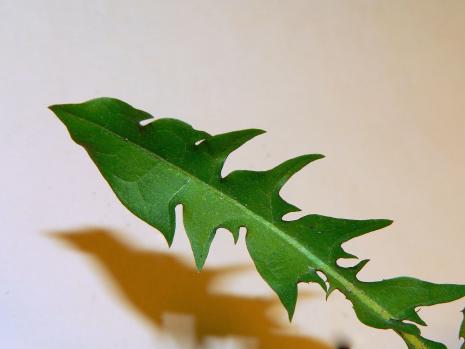Five Common Wild Edibles Of Spring For People No Good At Finding Morels
This one is for all the frustrated morel hunters out there. You know who you are. You know in theory where to find morels. You could probably rattle off 101 tips on how to spot the little buggers poking up through the leaf litter after a gentle spring rain. Still, every spring you are left out of the conversation when talk among your foodie friends turns to the sublime goodness of foraging wild edibles.
But no more. Morels are only one of the many delicious wild foods that can be found growing in the forests, fields and wetlands in around the Sleeping Bear Dunes. Here’s a rundown of five delicious favorites for the frustrated morel hunter in all of us—including a few wild delicacies you can probably find growing in your backyard.
Dandelion

[source: wikipedia.org]
A flowering little weed found in almost every backyard, the ubiquitous dandelion has a long history of medicinal and culinary uses. Dandelions are rich in potassium, antioxidants, and vitamins A and C. Mid-April through mid-May, before the first flowers emerge, is the best time to harvest young dandelion greens, which can be eaten raw, steamed, boiled sautéed or braised. Click here for a great dandelion salad recipe with goat cheese and apples.
Cattails

[source: wikipedia.org]
Nearly impossible to misidentify and found growing around almost every lake, pond and backwater slough in northern Michigan, cat o’ nine tails are a most delicious little delicacy when harvested in early spring. Nutritionally, the young cob-like tips and white bottom of the stalk are high in natural starch and potassium as well as vitamins A and B. The folks over at EatTheWeeds.com have a great rundown of tips and techniques on how to harvest cattail stalks and roots. Click here to check it out.
Leeks

[source: wikipedia.org]
Resembling onions in appearance and smell, wild leeks or “ramps” are found growing all over east and south facing hillsides in northern Michigan forests soon after the snows melt. Both the leaves and bulbs of wild leeks are edible and can be eaten raw, steamed, fried or baked. Our friends over at Mynorth.com put together this wonderful little video years back on how to identify leeks in the wild, along with tips on how to cook them. Click here to check it out.
Stinging Nettle

[source: wikipedia.org]
A delicious wild green with and admittedly off-putting name, stinging nettle is considered one of the forgotten “super foods” of the forest. When harvested and prepared correctly, the leaves and stems taste like spinach and are packed with vitamin and minerals. Spring is the best time to harvest young stinging nettle. Be sure to wear gloves (even the stalks of young plants have those bothersome stinging hairs), look for plants that are only around 12-inches tall and only pick the tender tips of the stalk and topmost leaves, which can be turned into soup and tea. Click here for more nettle harvesting and cooking know-how.
Pine Needles

[source: wikipedia.org]
Packing more vitamin C than a lemon, pine needle tea was a popular drink of early American settlers who drank the stuff by the gallon in the winter months to supplement their diet of meat and root vegetables. Throughout history, pine needle tea has been touted as a cure for everything from the common cold to scurvy. For a complete guide to harvesting and preparing pine needles for tea, check out this PracticalPrimitive.com primer by clicking here.
[banner source: wikitravel.org]